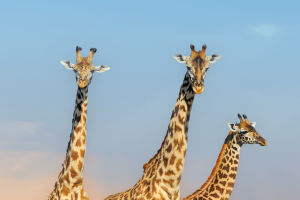Speed Unleashed: The Cheetah
Cheetahs are nature's speedsters, reaching up to 70 miles per hour (112 km/h) in mere seconds. However, their life is more than just sprinting.
From their unique biology to their hunting strategies and survival challenges, cheetahs offer an incredible glimpse into the world of speed and adaptability.
Let's dive into the fascinating life of these extraordinary animals.
Built for Speed: A Biological Marvel
Cheetahs are biologically optimized for speed. Their lightweight frame, long legs, and flexible spine allow them to stretch their body mid-run, covering the vast ground with each stride. Their large nasal passages bring in more oxygen during sprints, while their heart and lungs support rapid bursts of energy. Even their tail plays a crucial role, acting like a rudder to help with balance and sharp turns.
Yet, their incredible speed comes with a cost. A cheetah can only sprint for about 20-30 seconds before it overheats. After each chase, they need time to rest and cool down, making them vulnerable to other predators like lions and hyenas during these recovery periods.
Masters of the Chase: Hunting in Style
Cheetahs rely on stealth and precision when hunting. Unlike other big cats that depend on brute force, cheetahs sneak as close as possible to their prey, often within 50 feet, before unleashing a powerful burst of speed. Their diet mainly consists of smaller animals like gazelles, impalas, and hares.
Cheetahs hunt alone or in small groups if they're siblings. But hunting is a risky business. Even after catching prey, they have to eat quickly before larger predators like hyenas steal their meal.
13 Shocking Cheetah Facts You Didn't Know!
Video by The Clever Club
Cheetahs in the Wild: Survival Challenges
Cheetahs face numerous threats in the wild. Habitat loss due to human expansion has drastically reduced their hunting grounds. Additionally, climate change affects the availability of prey, and poaching remains a constant danger. Only about 7,000 cheetahs remain in the wild, primarily in sub-Saharan Africa. Conservation efforts are underway, but the species is still classified as vulnerable.
In captivity, cheetahs are part of breeding programs to ensure their survival, but they struggle to adapt to life behind fences. These animals are built to run, and captivity cannot replicate their need for wide-open spaces.
A Symbol of Grace and Power
Cheetahs have been admired for centuries. In ancient civilizations, rulers kept them as status symbols, valuing their beauty and hunting skills. Today, they continue to inspire with their elegance and unmatched speed, becoming symbols of resilience and adaptability.
A Race Against Time
Cheetahs are not just fast—they are agile, strategic, and beautiful creatures facing a fight for survival. With ongoing conservation efforts, we can hope to preserve this majestic animal for generations to come.


